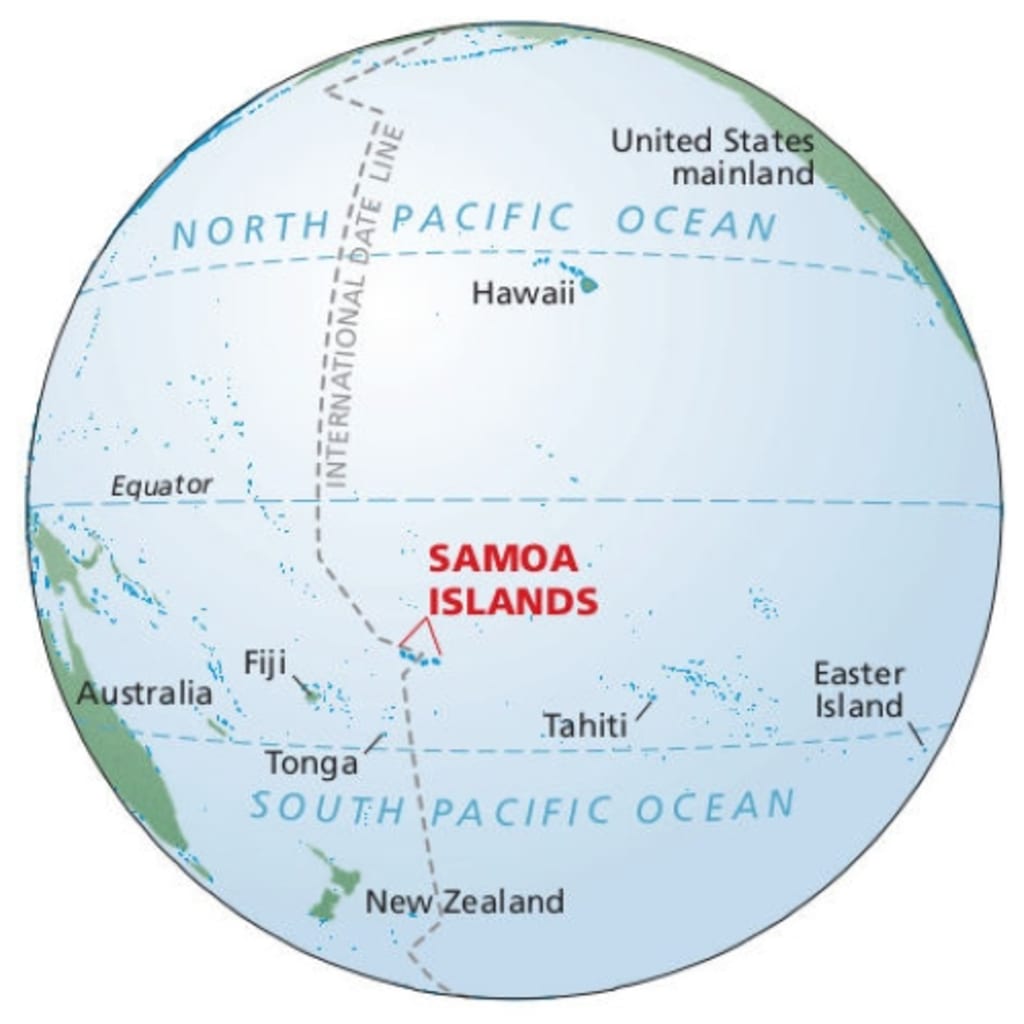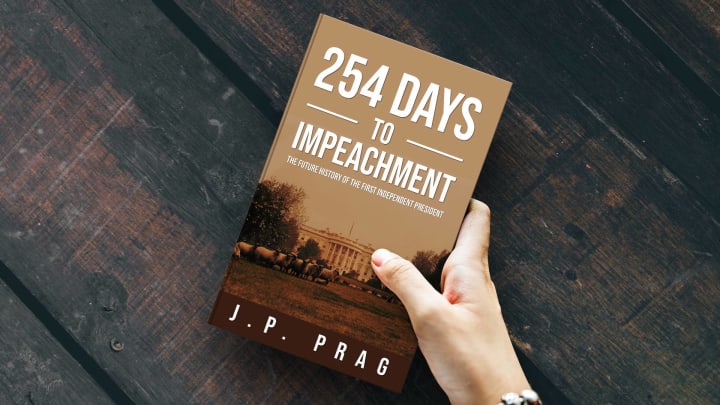
January 20th (Pago Pago, American Samoa) – “While the territories of the United States debate whether they wish to be a State or not,” the President demurred, “I, unfortunately, cannot grant them the full Constitutional rights to which they are entitled due to the Supreme Court finding again and again that only some rights apply to the outlying possessions of the United States.”
Thus began the ninth of ten Executive Orders the new President debuted during the Inauguration Ceremony. In the prior order, the President had demanded that each of the five populated territories and the District of Columbia make a choice about whether they wanted to remain in the United States or not, and if so whether they wished to be a State or part of another State—among other considerations. This, coupled with the seventh order that opened up the rest of the world to joining America as new territories and States, seemed to be about spreading the rights, privileges, and protections of the United States through expansion. However, here the President took time to highlight the failings of the system where the United States had already taken over.
As outlined by the President, due to the results of a set of trials in the early 1900s known as the “Insular Cases”, the Supreme Court found that only “fundamental” rights were automatically extended to the territories. Other ones like voting, access to certain federal resources, and many more could only be conferred by Congress. Although some of this has been chipped away over time, generally the Supreme Court has upheld the overall conclusions of their predecessors, even when expressing that perhaps these policies are archaic. But instead of doing anything about the issue themselves, the courts have punted to Congress to correct the predicament they created.
And in that vein, Congress has slowly but surely seen to it. Rights, programs, democracy, and other features of the mainland United States were extended to each of the possessions. Except, according to the President, for a specific one that the administration intended to address:
Every person born in the federal district or any of the populated territories is a citizen of the United States. That is, everyone excluding the fine people of American Samoa.
Located deep in the South Pacific Ocean thousands of miles from the next nearest part of the United States, American Samoa consists of a handful of islands and atolls. During the early 1900s, the United States not only got Germany and Great Britain to give up claims on this particular set of lands, but also was able to procure agreement from the native inhabitants themselves. In May 2021, American Samoan Attorney Charles Ala'ilima testified before Congress saying in part:
When the United States flag was raised over Pago Pago Harbor 120 years ago, our traditional leaders believed that as part of the deal for transferring sovereignty to the United States they would be recognized as U.S. citizens. It was not until 20 years later that they were informed by the U.S. Navy that in the eyes of the federal government they were not U.S. citizens… Thus the status of “non-citizen national” was invented–a status no one in the United States even imagined existed until it was imposed by the federal government on non-white overseas populations in the early 1900s, and a status no one in American Samoa asked for.
Much the same was done in the other territories like Puerto Rico, the U.S. Virgin Islands, Guam, and even the Philippines before it was granted independence in 1946. Yet all other territories were eventually granted birthright citizenship by Congress, all apart from American Samoa. Instead, they remain “non-citizen nationals” and, in order to become citizens, have to move to one of the 50 States and then apply as if they were any other immigrant and not actually Americans.
In a quirk of the laws of naturalization, American Samoans can be fast-tracked as they only need to live in one State continuously for three months in order to apply for their full citizenship. The law (8 U.S. Code § 1427) says that a person must have resided within the United States continuously for five years as well as live in the State from which they are applying for three months. Since American Samoa is within the United States, people from there already have that requirement covered.
Nevertheless, they still have to jump through all the other hoops. This includes the English-language requirement, the politics and history tests, a check on “good moral character”, and all of the fees and expenses associated with going through the process—something that can cost thousands of dollars, including attorney fees.
The Supreme Court had the chance to weigh in with the case known as Fitisemanu v. United States. John Fitisemanu was born in American Samoa but had lived in Utah for 20 years as a taxpayer, husband, and father of three. On several occasions, Mr. Fitisemanu attempted to gain employment with government agencies, but was thwarted from doing so because of his status as a “national”. Finally, Mr. Fitisemanu attempted to vote in the November 2020 election and was again denied, thus prompting the lawsuit. In 2021 the U.S. Court of Appeals for the 10th Circuit found that the Insular Cases still applied and therefore denied his claim. That denial was left in place in 2022 when the Supreme Court—in an unsigned order—initially refused to hear the case. Eventually, though, the bench reversed course and agreed to settle the matter once-and-for-all.
Of course, this was not the first opportunity the Supreme Court had to revisit the Insular Cases, or at least the issue of citizenship. In 2015, the U.S. Court of Appeals for the District of Columbia heard Tuaua v. United States in which several American Samoans argued that under the 14th Amendment they were guaranteed birthright citizenship for being born on United States soil. The judges instead unanimously found that not to be the case, especially because of the precedents set by the Insular Cases. When Leneuoti Tuaua, his contemporaries, and their legal team petitioned the Supreme Court in 2016, the bench also refused to hear it and thus tacitly agreed with the lower court’s ruling.
It must be noted that at that time the Supreme Court was evenly divided between the conservative and liberal wings after the unexpected death of Justice Antonin Scalia. Since the Senate under the auspices of Majority Leader Mitch McConnell (R-KY) refused to consider then-President Barack Obama’s nominee to the Supreme Court for nearly a year citing questionable reasonings, it meant that the court did not have a majority to even agree to hear that case, which in turn resulted in the judges being forced to leave the results as-is.
Since that time, the Supreme Court was transformed under former President Donald Trump and Mr. McConnell into one that was not only majority conservative with a 6-3 advantage, but that also moved ideologically far to the right even beyond the Republican mainstream. Thus, by the time Fitisemanu v. United States was heard and decided years later by the Supreme Court, the majority took the opportunity to not just confirm the Insular Cases, but to expand them and the powers of Congress in extreme and unexpected ways.
Prior to hearing this case, Justice Neil Gorsuch, writing in concurrence of the decision in United States v. Vaello-Madero—which ironically affirmed that Congress could exclude people living in Puerto Rico from programs like Supplemental Security Income (SSI), even if that same person worked and was receiving the benefits in a State prior to relocating to a territory—had written:
A century ago in the Insular Cases, this Court held that the federal government could rule Puerto Rico and other Territories largely without regard to the Constitution. It is past time to acknowledge the gravity of this error and admit what we know to be true: The Insular Cases have no foundation in the Constitution and rest instead on racial stereotypes. They deserve no place in our law.
Despite these sentiments, Justice Gorsuch was unable to convince his contemporaries or bring them around to any of his views. Instead, he joined the liberal wing in dissent and the 5-4 majority of the remaining conservative justices decided several points. Namely, that:
- The 14th Amendment’s citizenship clause stating that “[a]ll persons born or naturalized in the United States, and subject to the jurisdiction thereof, are citizens of the United States and of the State wherein they reside” is literal to the word “State”. Therefore, birthright citizenship is only guaranteed for those who are born in an actual State, not a territory.
- Under Article 1 § Section 8 § Clause 4 of the Constitution, Congress can decide all laws and rules related to naturalization and citizenship. As such, Congress had the right to extend birthright citizenship to those born in places like Puerto Rico and Guam but deny them to American Samoa. At the same time, they affirmed Congress’ sole authority to decide that birthright citizenship can be extended in other ways, such as to a child of an already-confirmed citizen when that birth takes place abroad.
- Further, under Article 4 § Section 3 § Clause 2, only Congress has the right to decide what, if anything, is to be done with the possessions of the United States that are not a part of a State. Because of this, Congress can decide what applies to a possession and what does not, so long as it does not restrict or remove a right found to be “fundamental” by the courts. Once again, “fundamental” was still left vague and to be argued later.
- However, the courts did confirm that voting and being able to work for the government are not “fundamental”, and therefore Mr. Fitisemanu is without any recourse but to seek full citizenship. Since that option is available to him, the courts did not see the process and expenses as a “significant impediment”. They wrote in their decision that Mr. Fitisemanu could gain those rights through a well-defined methodology created by Congress and that he was at fault for not seeking that recourse over the 20 years he lived in Utah before filing suit.
Finally, in an unprecedented reinterpretation of the Constitution and internationally understood definition of the terminology, the justices found that naturalization and citizenship do not have to be one level; that there can be different types of citizens or citizen-like statuses with varying degrees of rights and responsibilities. In this case, the court affirmed that “non-citizen nationals” still belonged to the United States, but did not have all of the rights of full citizenship like voting, nor the responsibilities like jury duty or paying certain federal taxes. For further justification, the members of the court turned to examples of occupied areas during wartime like with post-World War II Japan from 1945 to 1952. Here, the judges argued that while Japan was arguably a possession of the United States during that time, there would have been no desire to have its people automatically gain citizenship. Therefore, Congress was able to define that relationship as a possession of the United States and then again through treaty when it was released from that possession.
Another example was with rights that are allowed to be removed from certain individuals. For instance, the Supreme Court has upheld that convicts, even after serving their time, are not automatically entitled to regain their right to vote. Or similarly, people deemed mentally unstable are allowed to have their 2nd Amendment right to bear arms restricted. By this logic, the majority argued, there already were several layers of citizenship as decided by Congress and State legislatures.
As a consequence of this ruling, many have feared that a literal second class of citizenship would be created, but Congress has been too deadlocked between Republicans and Democrats to pass any type of legislation that would bring about something remotely like that. Still, the potential exists, and attempts have been made to craft legislation what would align with the court’s new philosophy, especially at the State level. Since these attempts have come from the more extreme wings of the Political Parties, leaders have thus far been able to tamp down such efforts.
Which returns us to the topic of the President’s Executive Order. Here, the leader of the free world has demanded that all American Samoans and other outstanding “non-citizen nationals” be made full citizens. How then, given the Congressional powers as decided by the Supreme Court, could the President possibly make the nearly 50,000 people living in American Samoa and the perhaps 100,000 more similarly situated people currently living on the mainland in one of the States or the District of Columbia into this class?
One very explicit law (8 U.S. Code § 1427, Clause F, Subclause 1) says that the Executive Branch does—under a specific set of circumstances—have the ability to grant citizenship to extraordinary individuals. However, under Subclause 3 of that same law, that is limited to just five people in total per fiscal year. As such, using this method would take at least 30,000 years to implement, even if every person could be found “extraordinary”.
Instead, the President has decided to do an end-run around Congress by bending the existing laws as written. Within the text of the order, the President has directed the Attorney General and other relevant offices to take a seven-part approach for all “non-citizen nationals”, starting with those currently residing in American Samoa:
(1) Set up a United States Citizenship and Immigration Services (USCIS) temporary field office and “service district” in American Samoa. With a “service district” covering the territory, the three-month residency requirement in another State will no longer be required.
(2) Fill in form “N-400 - Application for Naturalization” for each person and hand deliver it to them for confirmation and signature. If necessary, employees from the Attorney General’s office should go house-to-house to gather the required signatures.
(3) Waive any need for biometric data, including fingerprints, since none are required by law.
(4) Modify the citizenship interview, English language test, history test, and “principle and forms of government” test. Instead, all of these requirements will be met with a one-question exam which will ask in English, “Is American Samoa a part of the United States?” As the President wrote in the order:
Should the person understand and answer in the affirmative, then they shall have passed the test.
In support of this scheme, the President provided an interesting justification. While the law calls for all of these exams to be administered, it does not say how they are to be dispensed, nor how they should be graded. Because of this, the President argues, the Attorney General can modify them as the chief executive deems necessary.
(5) Accept the President’s testimony that the person they are naturalizing is of “good moral character.” It is unclear if the President intends to make this testimony for each person individually, or if the Executive Order counts as a blanket statement for all of them.
(6) Complete all of these steps during the hand delivery, approve the application, and administer the oath of allegiance on site.
(7) Eliminate any and all fees associated with the process that the government has control over.
With all of this, the President seems to be acting within regulations as required, but making a real-world impact. Once all the people of American Samoa are citizens, it cannot be taken away from them. More so, their children born afterwards will automatically inherit that citizenship from them, as covered in a different section of the law. Wrapping it up, the President told the assembled crowd:
I wish I could extend all the rights and responsibilities of the entire Constitution to you. Sadly, even before I took office, I was stymied by an out-of-control radical Supreme Court that is held accountable to no one, and a do-nothing Congress that was happy to let you wallow for over a century. This is but the smallest gesture I can do for you. All I can promise is that while I am President, my administration will not try to circumvent our own laws on mere technicalities.

The above piece is an excerpt from the speculative fiction novel 254 Days to Impeachment: The Future History of the First Independent President by J.P. Prag, available at booksellers worldwide.

Learn more about author J.P. Prag at www.jpprag.com.

254 Days to Impeachment is a work of mixed fiction and nonfiction elements. With the fiction elements, any names, characters, places, events, and incidents that bear any resemblance to reality is purely coincidental. For the nonfiction elements, no names have been changed, no characters invented, no events fabricated except for hypothetical situations.
About the Creator
J.P. Prag
J.P. Prag is the author of "Aestas ¤ The Yellow Balloon", "Compendium of Humanity's End", "254 Days to Impeachment", "Always Divided, Never United", "New & Improved: The United States of America", and more! Learn more at www.jpprag.com.






Comments
There are no comments for this story
Be the first to respond and start the conversation.